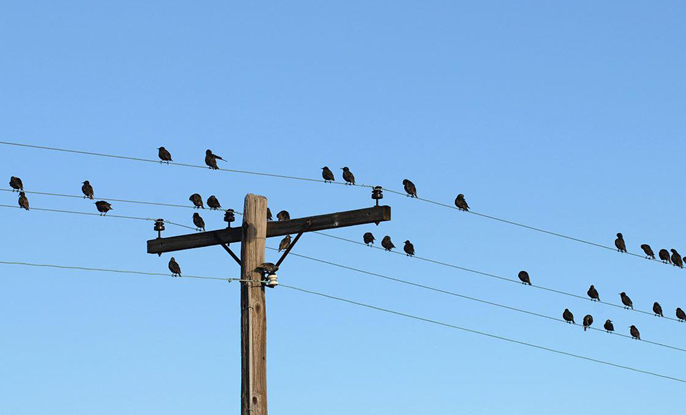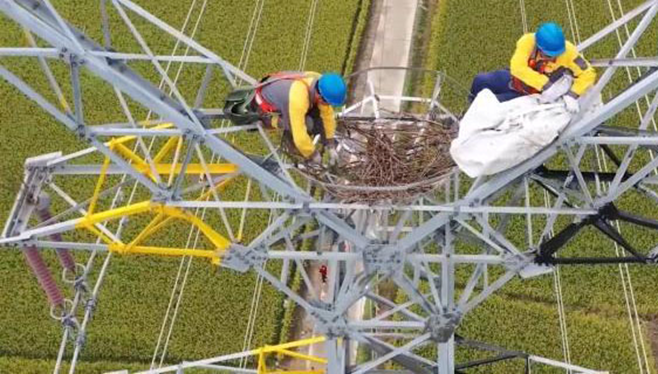In China, bird-related incidents among transmission line failures have shown a year-on-year increase, emerging as one of the primary factors affecting the safe operation of overhead power lines. This is largely because most overhead transmission lines are situated in areas remote from human activity, where bird populations are abundant. These birds frequently defecate and build nests on transmission towers, and may also peck at electrical equipment. The nesting materials they carry—such as twigs and wire—or the bird droppings they deposit can short-circuit insulator strings or air gaps, creating instantaneous discharge pathways that cause line failures. This not only disrupts the stable operation of the power grid but also poses a threat to the birds' own safety.
Last November, transmission line maintenance personnel from State Grid Chongqing Changshou Power Supply Company installed bird deterrent plates on Tower No. 47 of the 220-kilovolt Changhu-Qiannan transmission line while the line remained energized. This measure prevents external damage to the transmission line while also discouraging birds from nesting and roosting, achieving the dual goals of protecting birds and ensuring power supply. Beyond such anti-bird devices, many regions across China have constructed artificial nests near transmission lines to guide birds to nest in safe areas. Numerous birds, including rare species like the Oriental White Stork, have made these artificial nests their homes and bred there. This approach fundamentally eliminates bird-related damage to transmission lines while significantly preserving ecological balance.
The above cases demonstrate that China places great importance on bird ecological conservation. When selecting bird damage prevention measures, full consideration is given to minimizing adverse impacts on birds while ensuring effective protection of biodiversity. Dingxin Smart Technology's range of bird deterrent devices for transmission lines are developed under the principle of deterring birds without harming them. Integrating laser, video, AI intelligence, and ultrasonic technologies, these solutions are dedicated to ensuring the safety of both the power grid and bird populations, truly achieving sustainable development.






